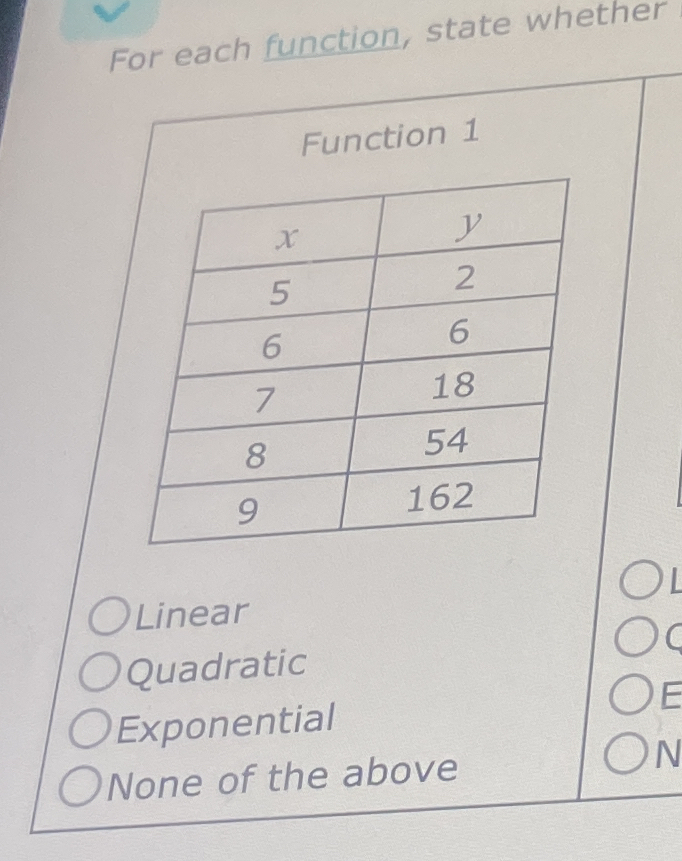For each function, state whether the function is linear, quadratic, exponential, or none of the above based on the given (x, y) values.

Understand the Problem
The question asks to determine what type of function is represented by a given set of (x, y) values. The options provided are linear, quadratic, exponential, or none of the above. To solve this, we will analyze the given y-values in relation to the x-values to see which category they fit into.
Answer
The function is exponential: $y = 2 \cdot 3^{(x-5)}$.
Answer for screen readers
The function represented by the given set of (x, y) values is exponential.
Steps to Solve
-
Identify the pattern of y-values
We need to examine if there is a consistent relationship between the x-values and y-values. Let's look at the y-values:
- When $x = 5$, $y = 2$
- When $x = 6$, $y = 6$
- When $x = 7$, $y = 18$
- When $x = 8$, $y = 54$
- When $x = 9$, $y = 162$
-
Calculate the ratio of consecutive y-values
This step helps in identifying if the pattern is exponential or not. We will calculate the ratio of consecutive y-values.
For example:
- $\frac{y(6)}{y(5)} = \frac{6}{2} = 3$
- $\frac{y(7)}{y(6)} = \frac{18}{6} = 3$
- $\frac{y(8)}{y(7)} = \frac{54}{18} = 3$
- $\frac{y(9)}{y(8)} = \frac{162}{54} = 3$
Since the ratio is consistent (3), we can conclude that the relationship is exponential.
-
Express the relationship of the function
The relationship can be expressed as $y = 2 \cdot 3^{(x-5)}$, showing that it represents an exponential function where the base is 3 and the exponent is dependent on the value of x.
The function represented by the given set of (x, y) values is exponential.
More Information
This exponential function indicates that for each increase in x, the corresponding y-value increases by a factor of 3, demonstrating growth that significantly accelerates as x increases.
Tips
- Assuming a function is linear without checking the ratio of y-values.
- Miscalculating the ratios or not recognizing that consistently increasing ratios indicate exponential growth.
- Confusing quadratic relationships with exponential ones; they have different characteristics in their rate of change.
AI-generated content may contain errors. Please verify critical information